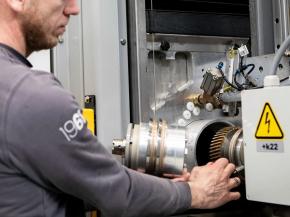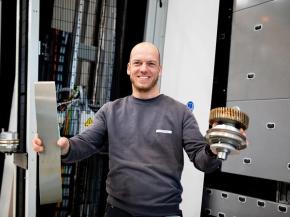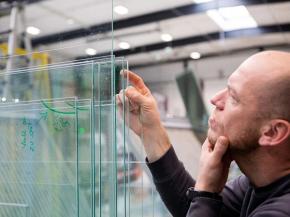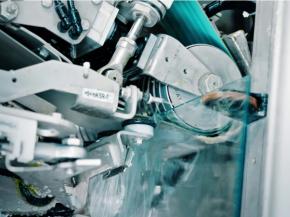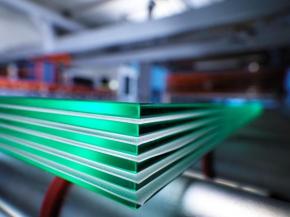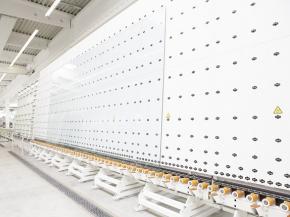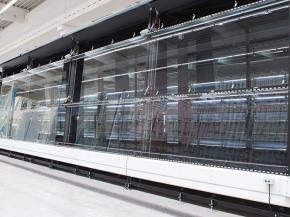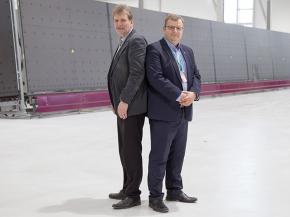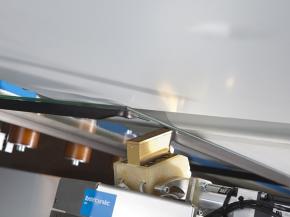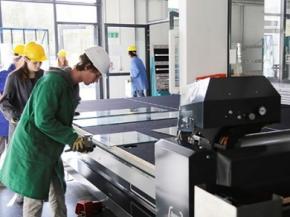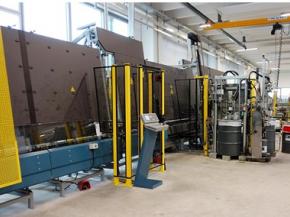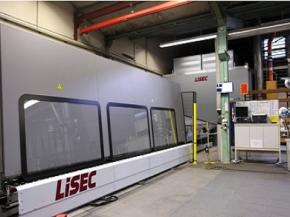Latest articles
| Robots are finding their way into the flat glass industry, improving not only process reliability but also product quality. But where exactly are they being used and what specific advantages do they offer?
| After seaming, grinding glass edges is another important work step in glass edge processing. The process is primarily used to remove overbreaks and underbreaks at the edges and to process the glass sheets to size.
| In glass edge processing, cutting the glass sheet is directly followed by the seaming process. Fully unprocessed glass edges exhibit overbreaks and underbreaks, conchoidal fractures, as well as micro-cracks along the broken edge.
| In glass edge processing, the requirements for the finished components can vary greatly depending on the location and purpose.
| The new LiSEC glass edge deletion machines are equipped with improved sensor technology. This measures with greater precision and therefore guarantees constantly high finishing quality of the glass edges.
| Safety standards are constantly rising in all possible areas in which glass is used or installed – which is the reason why lamination is also becoming increasingly important in the glass industry.
| During times when the number of suppliers in all industries is steadily increasing and the market is becoming more and more transparent at the same time, the importance of cost-effective production for higher profit margins increases tremendously.
| It is well known that laminated safety glass (LSG) is a material that is specifically processed because of its composition.
Glass off the roll - Thin glass is revolutionising the performance spectrum of glass and glass panes
| Thin glass – as thin as a razor blade or a human hair – is a reliable method to protect smartphone touchscreens, sensitive filters and sensors.
| sedak GmbH & Co.KG, Germany, operates the largest insulating glass line in the world – about extraordinary glass processing and the role of LiSEC.
| LiSEC is the pioneer in terms of the development and production of production lines for large-scale insulating glasses – incl. interview with Hannes Spiss, facade engineer at Arup, Büro für Bautechnik (office for construction technology)
| Skaala was founded in 1956 as a one-man company. The father of the two current owners, Hannu and Markku Hautanen, was a carpenter and already in those days, he processed glass while repairing doors and windows.
| glassonweb.com contacted the major players in the flat glass industry, asking for their statements regarding the Brexit vote results and how they see it affecting the near future of the European glass and construction markets.
| Cost cutting, it is often said, is difficult in glass production and processing as this sector is characterised by manual processes.
| In August 2013, the LiSEC development team started a major project with the mission: redesign of the tempering furnaces in order to save manufacturing costs and at the same time increase the process reliability. Result: the AEROFLAT.
| Internorm is the market leader in Austria as a manufacturer of high-quality window systems and doors and the leading window brand in Europe.
| Since September 2015, the HTL (Polytechnic Glass) Kramsach in Tyrol is using a LiSEC cutting table „base CUT“ for the education of the students.
| There's a company in the heart of Bucharest that plays a leading role in Romania's glass processing industry. "Spectrum Inovativ & Industries SRL" was founded in 1991, first as an agent for a foil manufacturer.
| FINSTRAL is a company group with its headquarters in Bolzano (IT) and occupies a successful niche in developing high quality doors and windows, as well as glass fittings.
| The Flachglas Group employs around 1,100 employees at three sites in Switzerland and three sites in Germany – around 650 of them generate revenues of approx. € 70 million at the Wernberg site (Bavaria).


